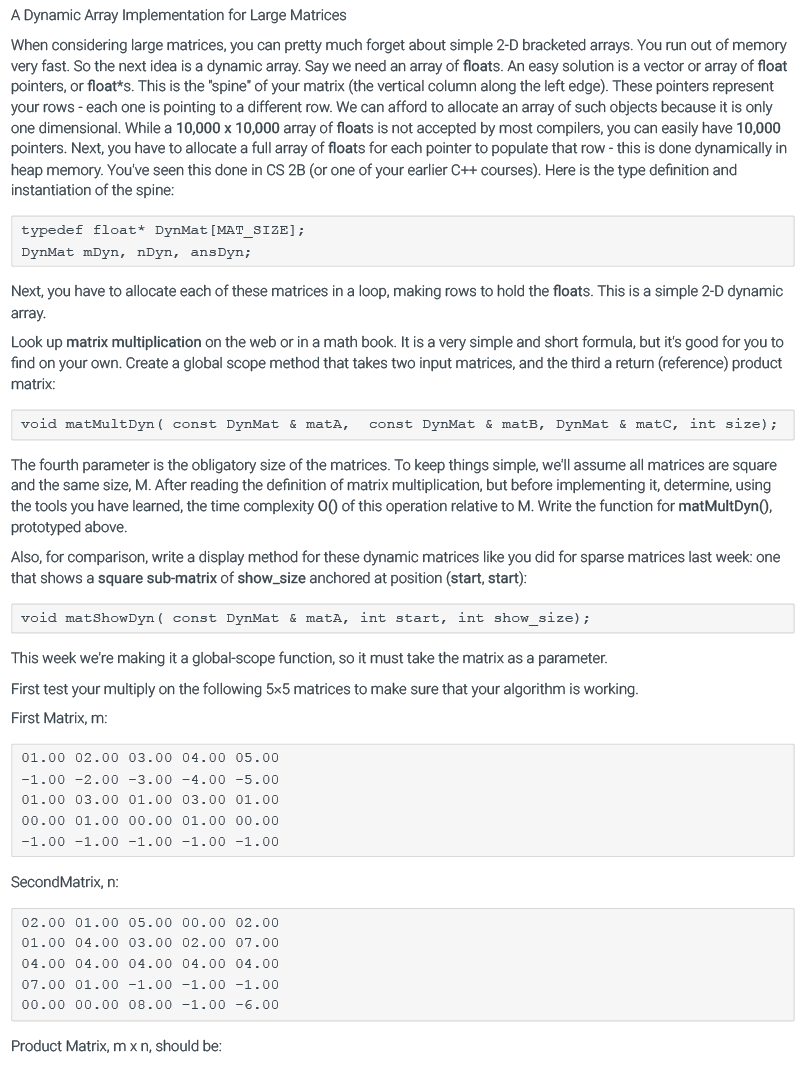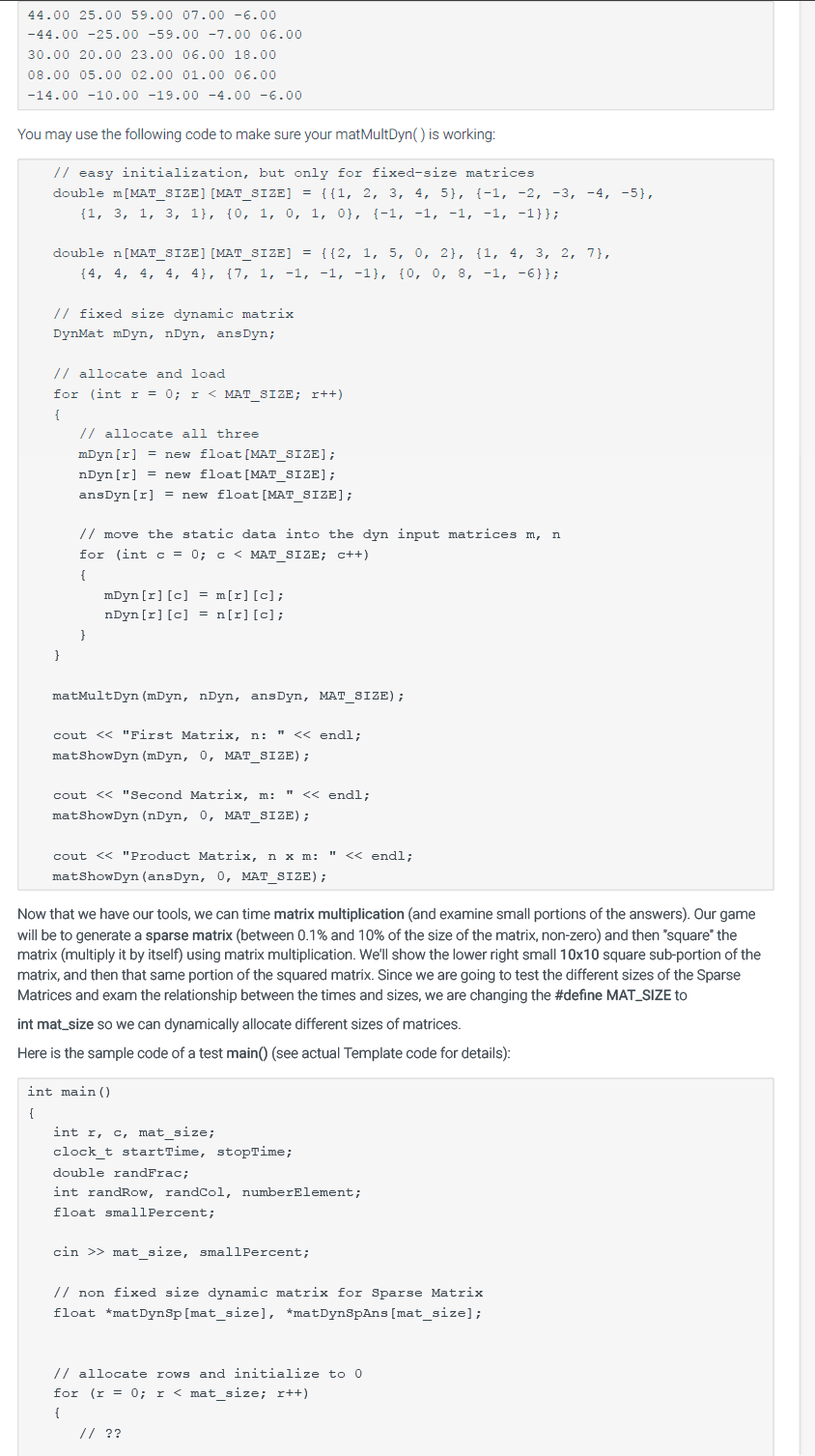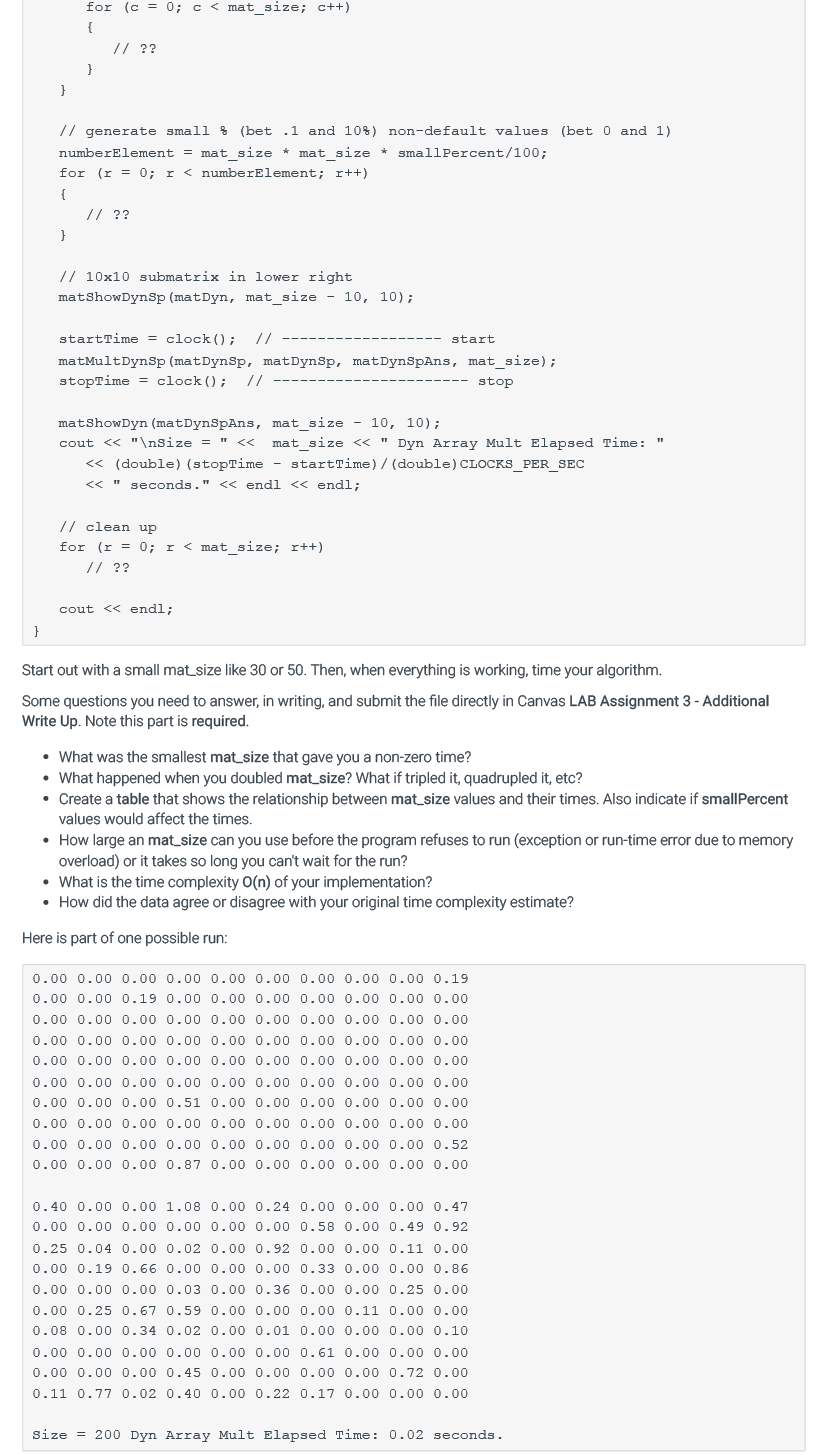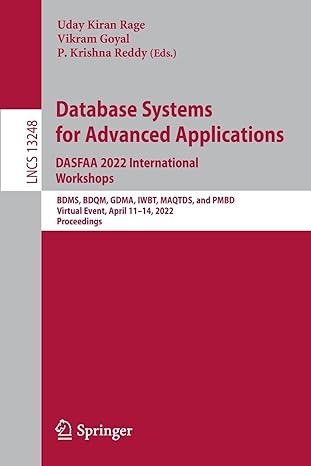Question
Only C++ Please edit the below main.cpp to get the same output as the example run. #include using namespace std; #include #include #include #include const
Only C++



Please edit the below main.cpp to get the same output as the example run.
#include
using namespace std;
#include
const int MAT_SIZE = 200; typedef float* DynMat[MAT_SIZE];
DynMat mDyn, nDyn, ansDyn;
// Create a global scope method that takes two input matrices, and the third a return (reference) product matrix: void matMultDyn( const DynMat & matA, const DynMat & matB, DynMat & matC, int size);
// display method for these dynamic matrices like you did for sparse matrices last week: one that shows a square sub-matrix of size = size anchored at position (start, start): void matShowDyn( const DynMat & matA, int start, int size);
// timing algorithms clock_t startClock() { return clock(); }
int main() { int r, c; clock_t startTime, stopTime; double randFrac; int randRow, randCol, smallPercent;
srand(time(0)); random_device rd; uniform_real_distribution dist(0, 1);
// format for cout cout
// non-sparse dynamic matrix DynMat matDyn, matDynAns;
// allocate rows and initialize to 0 for (r = 0; r
// generate small% (bet .1 and 10%) non-default values (bet 0 and 1) smallPercent = MAT_SIZE/20. * MAT_SIZE; // div by 20. means 5%, of course for (r = 0; r
// 10x10 submatrix in lower right matShowDyn(matDyn, MAT_SIZE - 10, 10);
startTime = clock(); // ------------------ start matMultDyn(matDyn, matDyn, matDynAns, MAT_SIZE); stopTime = clock(); // ---------------------- stop
cout
// clean up for (r = 0; r
cout
void matShowDyn( const DynMat & matA, int start, int size) { for (int i = start; i
void matMultDyn( const DynMat & matA, const DynMat & matB, DynMat & matC, int size) { for (int r = 0; r
After writing main.cpp file, please answer the following questions
- What was the smallest M that gave you a non-zero time?
- What happened when you doubled M , tripled it, quadrupled it, etc? Create a table that shows the relationship between M values and their times.
- How large an M can you use before the program refuses to run (exception or run-time error due to memory overload) or it takes so long you can't wait for the run?
- What is the time complexity O(n) based on your analysis?
- How did the data agree or disagree with your original time complexity estimate?
Step by Step Solution
There are 3 Steps involved in it
Step: 1

Get Instant Access to Expert-Tailored Solutions
See step-by-step solutions with expert insights and AI powered tools for academic success
Step: 2

Step: 3

Ace Your Homework with AI
Get the answers you need in no time with our AI-driven, step-by-step assistance
Get Started


